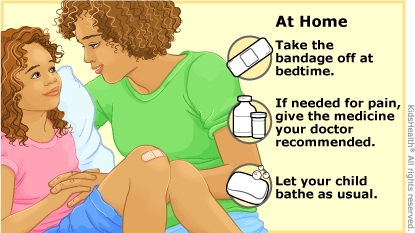An arthrogram is a test done to look inside a joint for injuries or other joint problems, or to put medicine inside a joint. Follow these instructions to care for your child after the arthrogram.



Your child:

How are arthrograms done? An arthrogram uses X-rays (or, less often, an ultrasound, CT scan, or MRI) to take pictures inside a joint. Contrast (a type of dye) or air is injected into the joint or into a vein to help make the pictures clearer. After the arthrogram, doctors look at the pictures to get more information about the joint. Sometimes doctors do an arthrogram during surgery. The pictures can help them make treatment decisions during the surgery.
When will we know the results of the arthrogram? Many pictures were taken inside the joint during the arthrogram. The radiologist and your provider will look at them carefully. When the test results are ready, your child's health care provider will share the results with you.